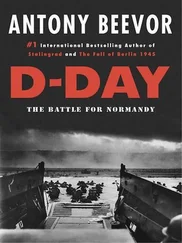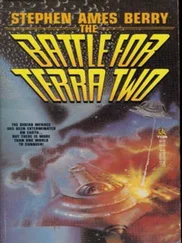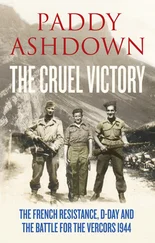There was no contempt, however, for the Japanese artillery, especially for the guns on that extreme right flank which had so impressed General Cates. Here the Japanese at the Quarry could deliver a plunging fire into the Americans. The Quarry had to be taken, and Colonel Pat Lanigan ordered “Jumpin’ Joe” Chambers to do it.
Six feet two inches tall and powerful, Lieutenant Colonel Justice Marion Chambers got his nickname from his bouncy stride. He was a veteran Marine, one of the finest battalion commanders in the corps. At Iwo that day, the men of his battalion were known as “the Ghouls” because of the antiflash cream they wore on their faces.
Jumpin’ Joe had noticed high ground commanding the Quarry. He pointed to it and told his officers: “Get up there before those Japs get wise and grab that ground themselves.” So up went the Ghouls, their cream no proof against enemy steel. They took the high ground and they finally silenced that dreadful storm of enemy artillery. But they paid for it. By the time Colonel Lanigan was able to relieve Chambers’ battalion, it was down from about 1,000 men to 150. Out of one company of 240 Marines only 18 men remained.
That was how the fighting went the first day on Iwo Jima. And that was how General Kuribayashi, who thought he had “allowed” the American Marines to come ashore, found to his dismay that they had come to stay.
Chapter 4
THE FLAG FLIES AT SURIBACHI
By nightfall, the Marines had taken a beachhead 4,000 yards wide from south to north. On the left, where the island had been crossed by men of the 5 Division, the beachhead was 1,000 yards deep. On the right it was only 400 yards deep, or the length of four football fields.
It was an area not half as big as the average Midwestern farm, but it had been seized at a cost of 2,420 killed and wounded Americans. Within the beachhead the carnage was frightful. The sickening stench of death hovered everywhere. Bodies were lying all over. Sometimes the only distinguishing mark between the fallen of both nations was the puttee-tapes on the legs of the Japanese or the yellowish leggings of the Americans. Many of the Japanese dead were naked. Their uniforms had been blasted off them.
Along the beaches the casualties were piling up. Marines coming back for supplies usually brought wounded men with them. They either carried them on stretchers or slung them in ponchos or just helped them hobble to the medical aid stations. Even at the aid stations, the wounded were far from safe. Shells struck these stations repeatedly. On one beach alone, two medical sections, each consisting of a doctor and eight corpsmen, were wiped out. Surgery had to be improvised inside captured Japanese positions. Surgeons smeared with blood worked feverishly through the night, pausing only to smoke or to stretch their aching muscles.
Everyone was cold. Iwo Jima is in the North Pacific and the month was February. Men recently accustomed to tropic heat shivered in temperatures that dropped to 60 degrees. Many wore windbreakers, but their teeth still chattered as they lay on Iwo’s cooling sands, bracing for the enemy counterattack they had been told was sure to come. But there was no banzai charge. General Kuribayashi did not intend to break his own back with such wasteful tactics. Instead, he kept striking at the invaders with artillery. That was far more effective than any wild suicide rush. All through the night Marines were killed or wounded under steady, relentless Japanese artillery fire. It came blasting into the beachhead from both Suribachi and the northern beachhead. Rockets were also fired, passing overhead with their insane blubber and showers of sparks, rocking the beachhead when they landed. Worst of all was the fire from Suribachi, where the Japanese still looked down the Americans’ throats. On the morning of February 20, the Marines on the left flank turned south to attack the volcano.
Colonel Harry Liversedge, a tall, gaunt man known as “Harry the Horse,” commanded the 28 Regiment of the 5 Marine Division. The 28 was the outfit assigned to attack Suribachi. Before Harry the Horse and his Marines attacked, Navy and Marine aircraft struck at the volcano. They came roaring in low from the west to hit Suribachi’s slopes and base with bombs, rockets and bullets. Tanks of napalm, or jellied gasoline, flashed in great leaping eruptions of flame. Offshore, American warships bombarded the volcano from both flanks. On land, American artillery began to bay with iron voices. Such a thunderous onslaught could not fail to knock out enemy positions. But not enough of them collapsed. The moment the Marines began to advance, they began to suffer casualties. Once again, it was a matter of valor. The Marines had to slog ahead on foot with dynamite and flame throwers, and their net advance for the day was 200 yards.
That night Colonel Kanehiko Atsuchi, the commander of Suribachi, sent up flares to light the American lines for Japanese artillery fire from the north. It came whistling down, and the 28 Marines passed a night nearly as bad as the day. Thus, a dreadful alternating rhythm had begun on Iwo Jima. Every 24 hours was divided into an inferno of combat by day and a huddled cold hell of enemy shellfire by night. Each morning the Marines prayed that they would live to see the dusk; yet the moment darkness set in, they asked God for the dawn. So with daylight of February 22, they resumed the ordeal of assault.
Harry the Horse’s regiment was now fully committed, attacking with three battalions abreast. As it did, a drizzling rain began to fall. Soon it was pouring. Suribachi’s ashes became a sticky gray paste. It clung to the Marines’ clothing and built platforms of mud under the soles of their shoes. It fouled their rifle breeches. To eject empty cartridges the Marines had to work the bolts by hand, thus slowing their rate of fire. Drenched, mud-smeared, steadily losing men, Liversedge’s regiment punched down-island to the very base of Suribachi.
They fought all the way. Corporal Dan McCarthy alone shot 20 Japanese. Sergeant Savage, the Marine who had helped Tony Stein knock out pillboxes on D day, killed seven more. Another Marine jumped into a blockhouse and killed its ten occupants before he was himself killed. Still another was rushed by a saber-swinging enemy officer. Seizing the blade with his bare hands, the Marine wrenched it away. Then, with dripping hands, he used the sword to kill the officer. Bunker after bunker was falling. But the Japanese fought back fiercely. Tony Stein was wounded and had to go to the rear.
On the east coast the platoon led by Lieutenant Wells came to an empty enemy pillbox. Sergeant Henry Hansen and Private First Class Donald Ruhl rushed to the top of the position and began exchanging shots with enemy soldiers in a network of trenches behind it. Suddenly, a demolition charge sailed through the air. It landed in front of Hansen and Ruhl.
“Look out, Hank!” Ruhl shouted, and hurled himself on top of the charge to absorb its full blast. The concussion staggered Hansen, spattering him with bits of flesh and blood, and killed Donald Ruhl. This gallant young American had sacrificed his life to save his sergeant.
That was how the Marines fought in the Pacific, and especially on Iwo Jima. Again and again brave young men flung themselves on enemy charges or grenades to save their comrades. They did it instantly, almost without reflection, for they had trained themselves to make the response automatically. With such men, the Marines were unstoppable; and by nightfall the 28 Regiment had battled down to the base of Suribachi and all but surrounded it.
By dusk, it was obvious that the Japanese on Suribachi were about ready to crack. Marines could see enemy soldiers leaping to their death from the lip of the crater. This was the Japanese way. To them committing suicide was an honorable end. They were sworn to fight to the death anyway. To die fighting for the divine emperor was the noblest possible end. It meant that their souls would live eternally in Yasakuni Shrine, a mythical hero’s heaven similar to the Valhalla of the Norsemen.
Читать дальше











